The yellow arrow is one of the official symbols of the Camino de Santiago, and one of the most representative. Over the years, it has become the great ally of pilgrims walking towards Santiago de Compostela. We find it painted along the Jacobean routes to indicate the correct direction to Santiago de Compostela. It is part of the daily life of pilgrims, visible on milestones, on the ground, on stones, on trees, or on facades. But how did this icon of the Camino de Santiago come to be?
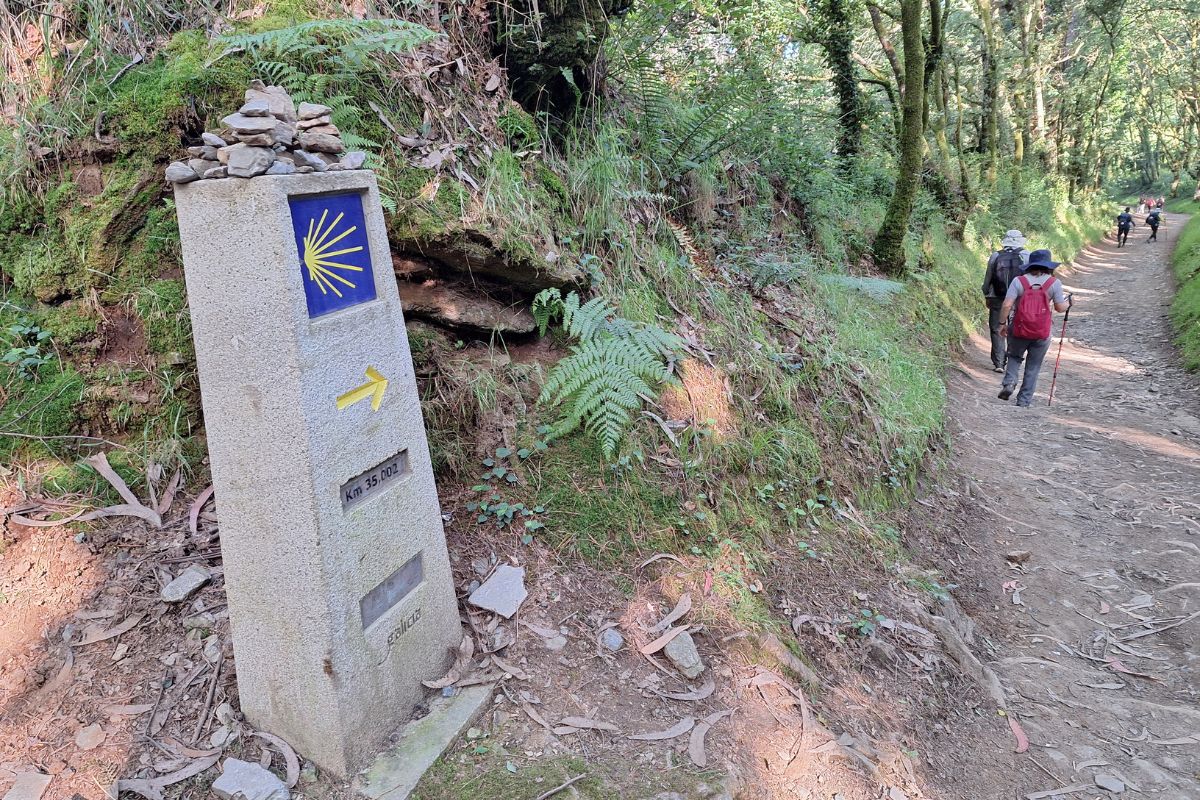
The yellow arrow guides pilgrims at every crossroads
History and Origin of the Yellow Arrow
The yellow arrow, now one of the main symbols of the Camino de Santiago, has a peculiar history. It emerged in 1984 thanks to Father Elías Valiña, the parish priest of O Cebreiro, and a great scholar of the Camino de Santiago. Among many other things, he dedicated himself to revitalizing and marking the Camino de Santiago, which at that time was poorly marked.
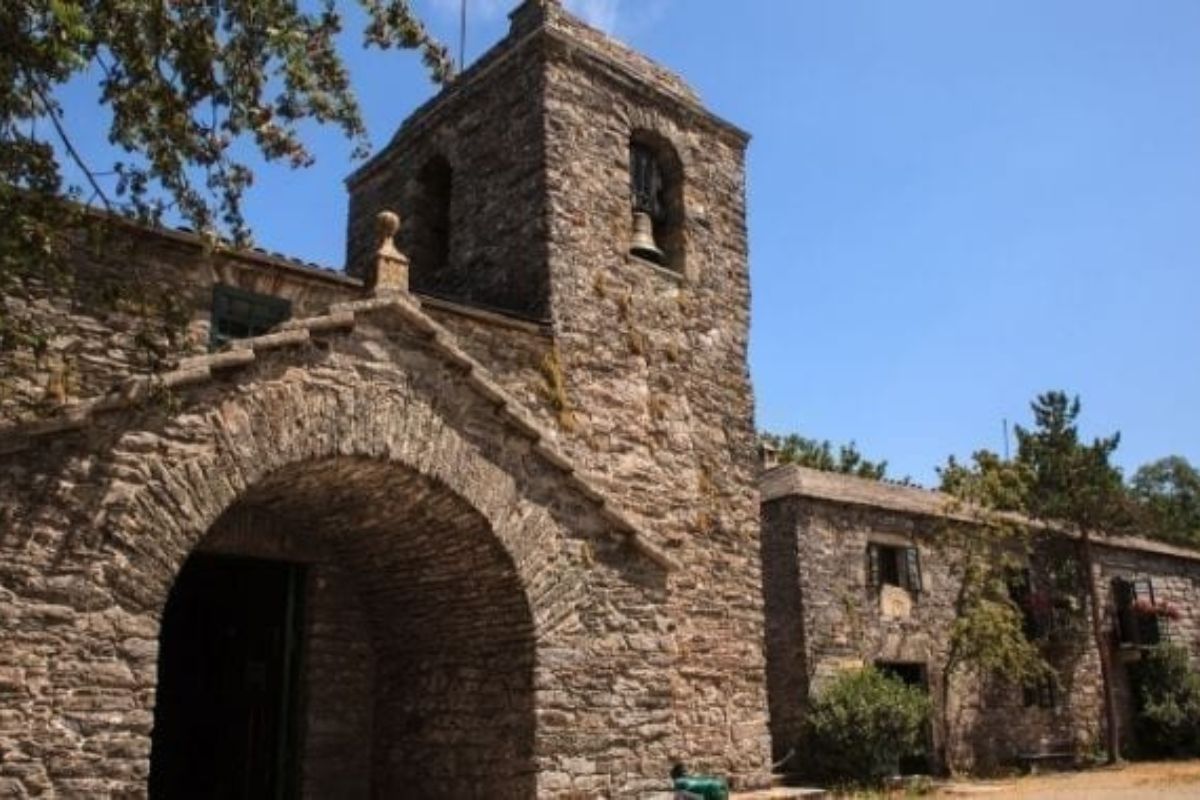
Church of Santa María la Real de O Cebreiro, where Elías Valiña was a parish priest
Until that time, the numerous routes of the Camino de Santiago were not well marked, and many sections were impassable. In fact, this was a unanimous complaint among the few pilgrims who, in those years, made the pilgrimage to Santiago.
Valiña made a brave decision: to start marking the French Way of the Camino de Santiago. Using leftover paint from painting the N-VI road, Father Elías drove to the start of the French route in Spain. With the help of collaborators and family members, he began painting yellow arrows from Navarra to Galicia, marking the path to Santiago de Compostela.
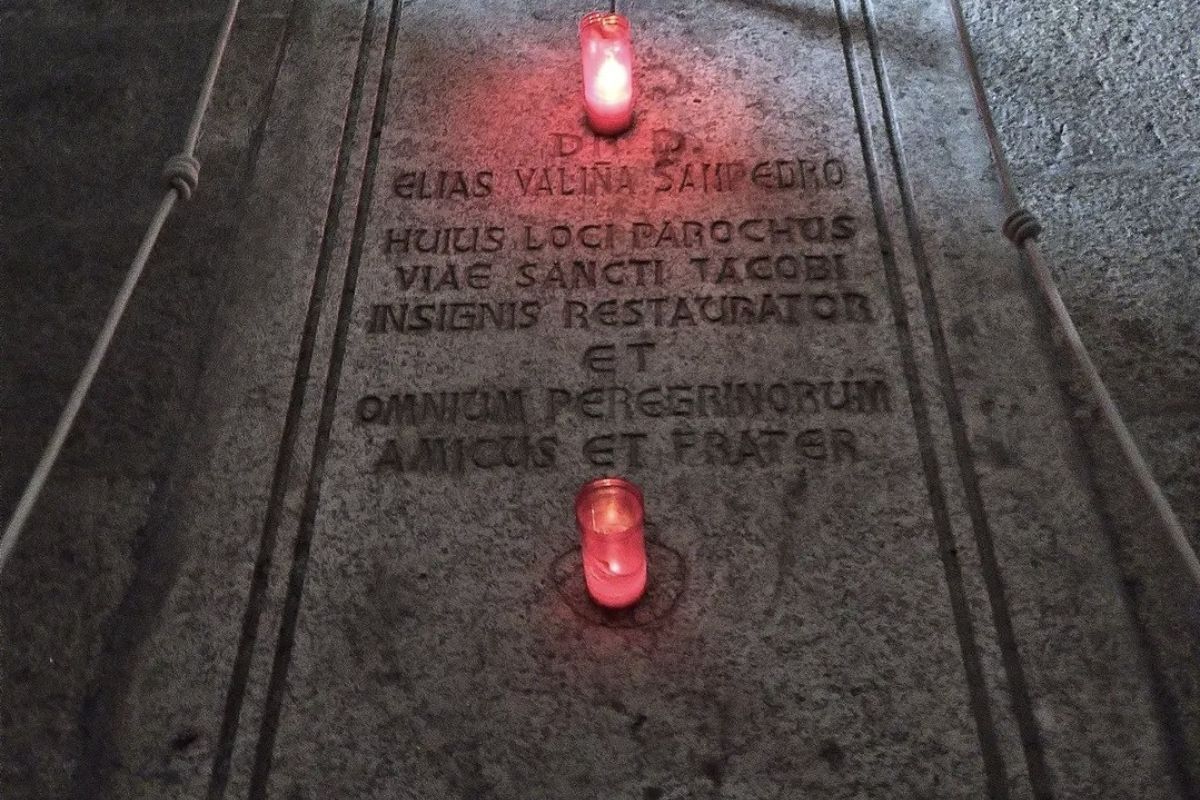
Elías Valiña’s Tomb
His goal was to provide a clear and easy-to-follow guide for pilgrims. Thanks to his efforts, today, the yellow arrow is a universally recognized symbol for walkers on the Camino de Santiago.
Importance and Function of the Yellow Arrow on the Camino
The yellow arrow serves an essential function on the Camino de Santiago. Its main purpose is to guide pilgrims along the correct route, preventing them from getting lost. These arrows are strategically placed at crossroads, forks, and places where the route is not obvious. Additionally, the yellow color is very visible, even in low visibility or bad weather conditions.
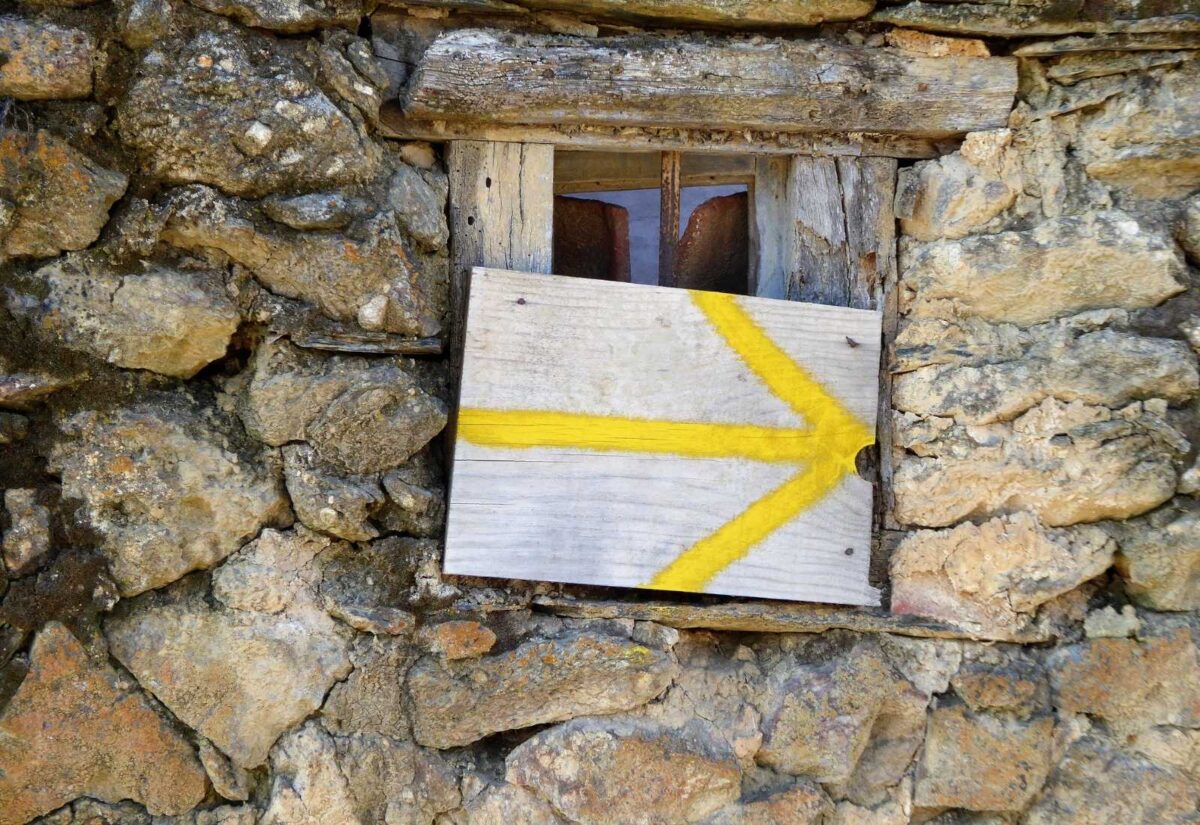
Yellow arrows are found everywhere on the Camino de Santiago
Beyond its practical function, the yellow arrow holds great symbolic value. It represents selfless help and support for pilgrims, reminding them that they are not alone on their journey. The constant presence of yellow arrows provides security and peace of mind, allowing pilgrims to focus on their spiritual and personal experience.
Curiosities and Anecdotes about the Yellow Arrows
The simple act of deciding to paint arrows over thousands of kilometers is a very curious anecdote. However, there is one involving Valiña himself and the Civil Guard.
Apparently, Elías was caught by the police while painting the arrows. When asked what he was doing, Elías stated that he was “preparing the invasion” from France. Taken to the police station, he was able to clearly explain that he was simply making it easier for pilgrims to find their way. And so it was, and still is, with the number of pilgrims growing year after year. The words of this priest came true, making him a true visionary.
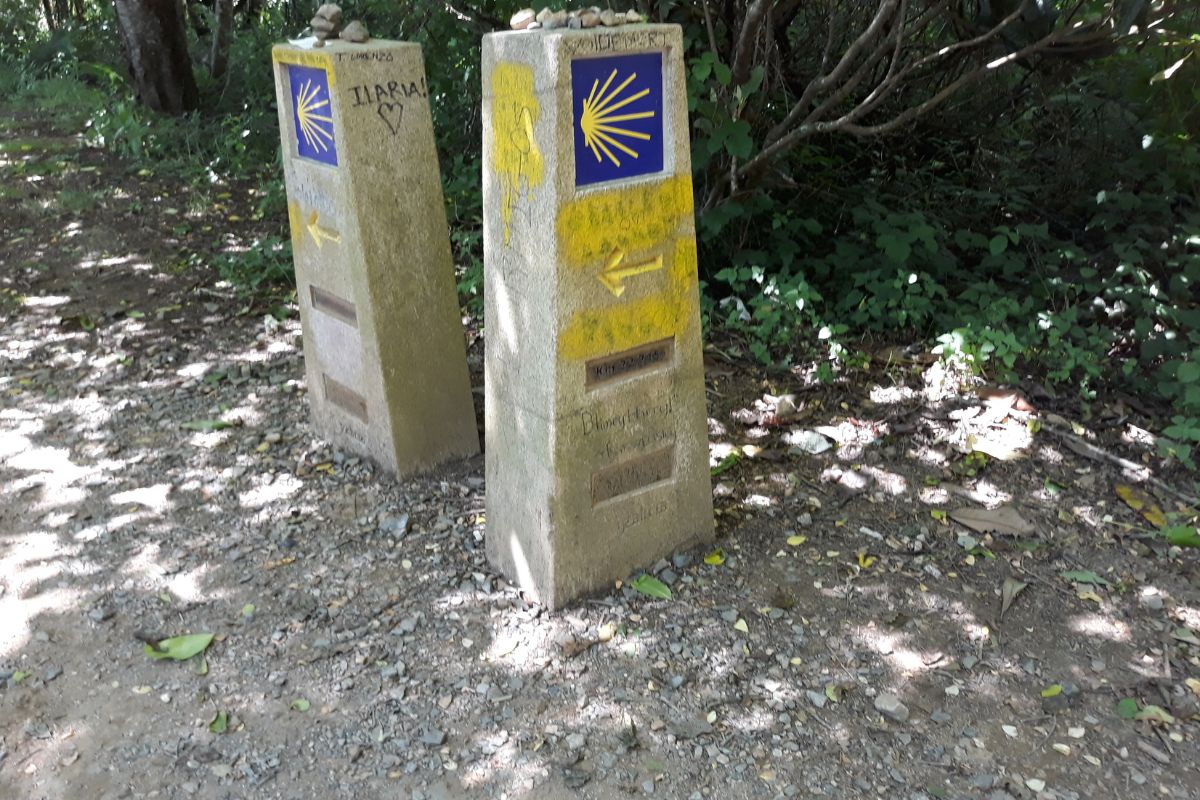
The yellow arrows indicate the main and complementary paths
Another noteworthy anecdote is that some people have tried to divert pilgrims by painting fake arrows. At first, the motive is not malicious, although it is self-interested: these fake arrows generally lead pilgrims to hostels or services off the route.
The Symbolism of the Yellow Arrow for Pilgrims
For pilgrims, the yellow arrow is much more than a simple traffic signal. It represents orientation and guidance on a spiritual and personal journey. Each yellow arrow is a reminder of being on the right path, and that each step brings them closer to their final destination, Santiago de Compostela.
Moreover, the yellow arrow symbolizes hope and perseverance. Along the Camino, pilgrims face physical and emotional challenges, and the yellow arrows motivate them to keep going.
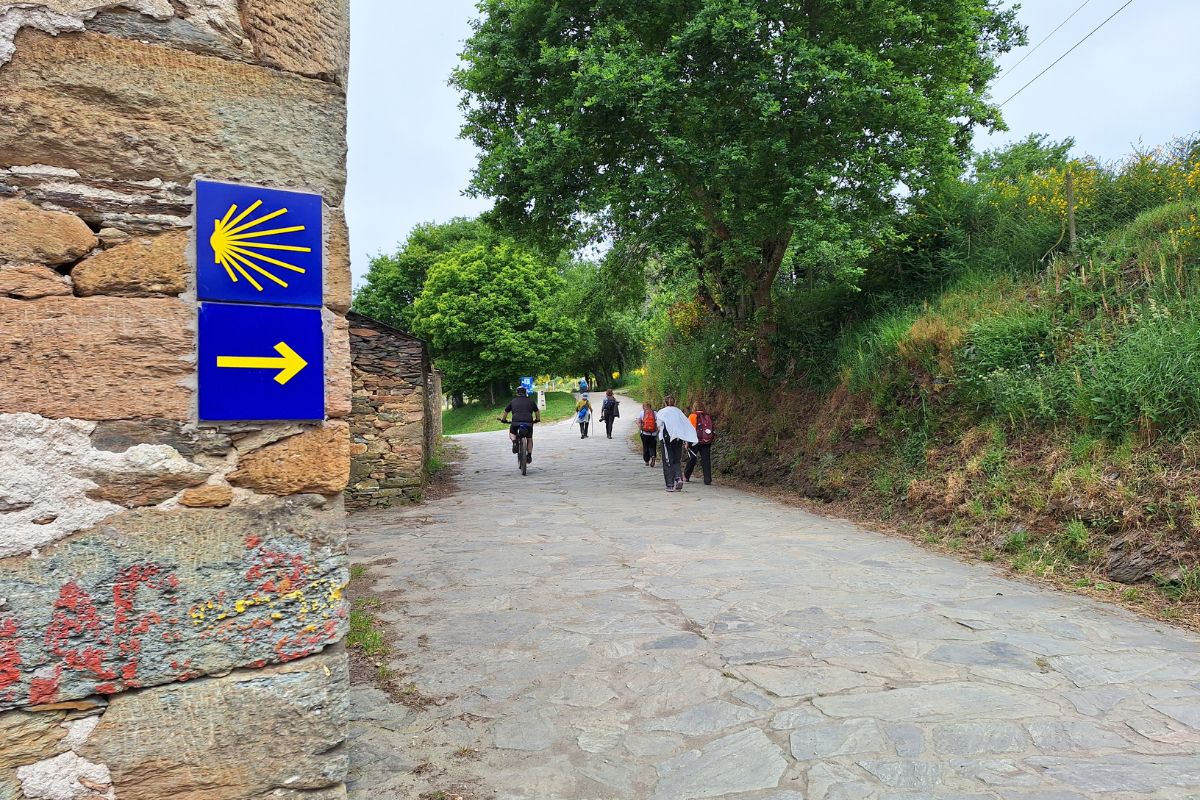
Arrow and scallop shell, official symbols of the Camino de Santiago
The yellow arrow is also a symbol of community and solidarity, uniting pilgrims from all over the world and creating a sense of belonging. Pilgrims find in it a common element, creating a unique and special connection.
In summary, the yellow arrow on the Camino de Santiago is much more than a simple sign. It has a rich history and deep meaning for pilgrims and plays a crucial role in the Camino de Santiago experience. If you have decided to walk the Camino de Santiago, remember that you are not just following a route. You are part of an ancient tradition, a global community, and a unique spiritual journey. Buen Camino!

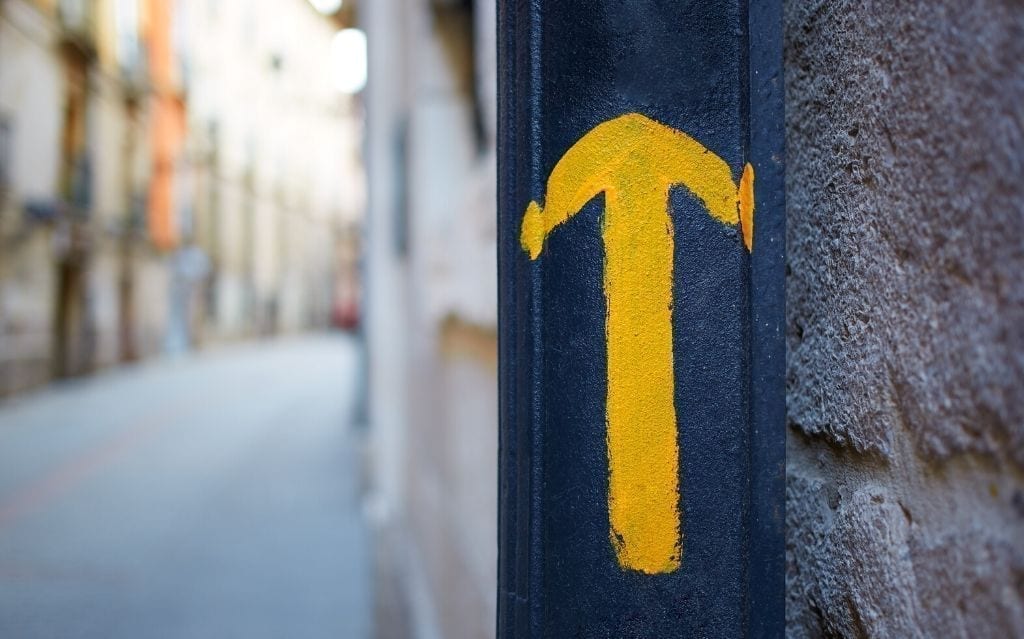


Leave A Comment